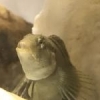Chillers
#1

Posted 02 February 2023 - 07:13 AM
The small, rural public library where I am library director received a grant for $3,000 to install a freshwater, native fish aquarium at the library. The Audubon Society of Western Pennsylvania is committed to supplying us native fish of the Buffalo Creek Watershed, which drains parts of Armstrong and Butler Counties, Pa. where we are located. We are seeking advice on purchase of the correct aquarium, etc. We are stumped on how to deal with the condensation problem when using a chiller. Can you direct me to where I can get the best advice? We want to move on with the project.
#2

Posted 02 February 2023 - 11:27 AM
Without knowing the exact scope of your project or what you wish to accomplish, my initial 2C are that you likely won't need a chiller for any natives you put on display and therefore will not have condensation issues.
What size (gallon) aquarium do you want? There are routinely 75's, 125's, 150's for sale at the 'big box' stores. You can order a custom built glass or acrylic tank but that is going to eat up most of your budget.
#4

Posted 07 February 2023 - 12:17 PM
This is a good article.
https://www.algaebar...TdFouQJ4fCUq1BE
The FB Group, Coldwater Marine Aquarium Owners, is a great resource. Basically, for really chilly tanks, they use really thick acrylic tanks, or even ones with double walls. I seem to remember that someone set one up successfully after buying a lobster tank from a grocery store.
That said, I don't use a chiller, but after reading Centrarchid's post, I might consider it. I don't use heaters in my tanks, and my tanks are in the lower level of my house, which doesn't have heat or AC, so they get down to 57-58F on the coldest winter days (my record was 55 once), and in the summer, get to be about 78 or so. The fish do great, but I've never seen my greenside darters in breeding colors yet. My rainbow darters get pretty colorful though.
Kevin Wilson
#6

Posted 26 March 2023 - 12:26 PM
You have two main options for chilling the tank.
First, you can use an active heat exchange system (think heat sink with airflow across it on one side and water on the other side) to chill the water - leading to minimal evaporation but more energy use. People do this a lot with axolotl tanks, though the bigger the tank the more power and more $$$ for the hardware. An insulated tank (think supermarket lobster tank) makes these systems vastly more efficient.
Second, you can use fans to push a steady stream of air across the water surface using evaporation to chill the tank. Less energy use here because fans can run on very little power, but you'll need to top off the tank frequently and deal with water vapor and mineral buildup on the glass. Tank dimensions matter here (more surface area = more cooling), as does the ventilation/temperature/air humidity of the room the tank is in. If the room is climate controlled through central cooling like you'd find in the average public museum or library you'll probably be fine. An automated topoff system would be a good idea here, but obviously adds cost and complexity. On a 40G breeder tank running 2 CPU fans running at low speed (pushing air in, ventilation on the opposite side of the lid letting it freely exit) I was able to cool the tank by about 4-5 degrees F in a 76 degree F room. I'd have to add a half gallon of water or so every day, sometimes more.
Reply to this topic
1 user(s) are reading this topic
0 members, 1 guests, 0 anonymous users










